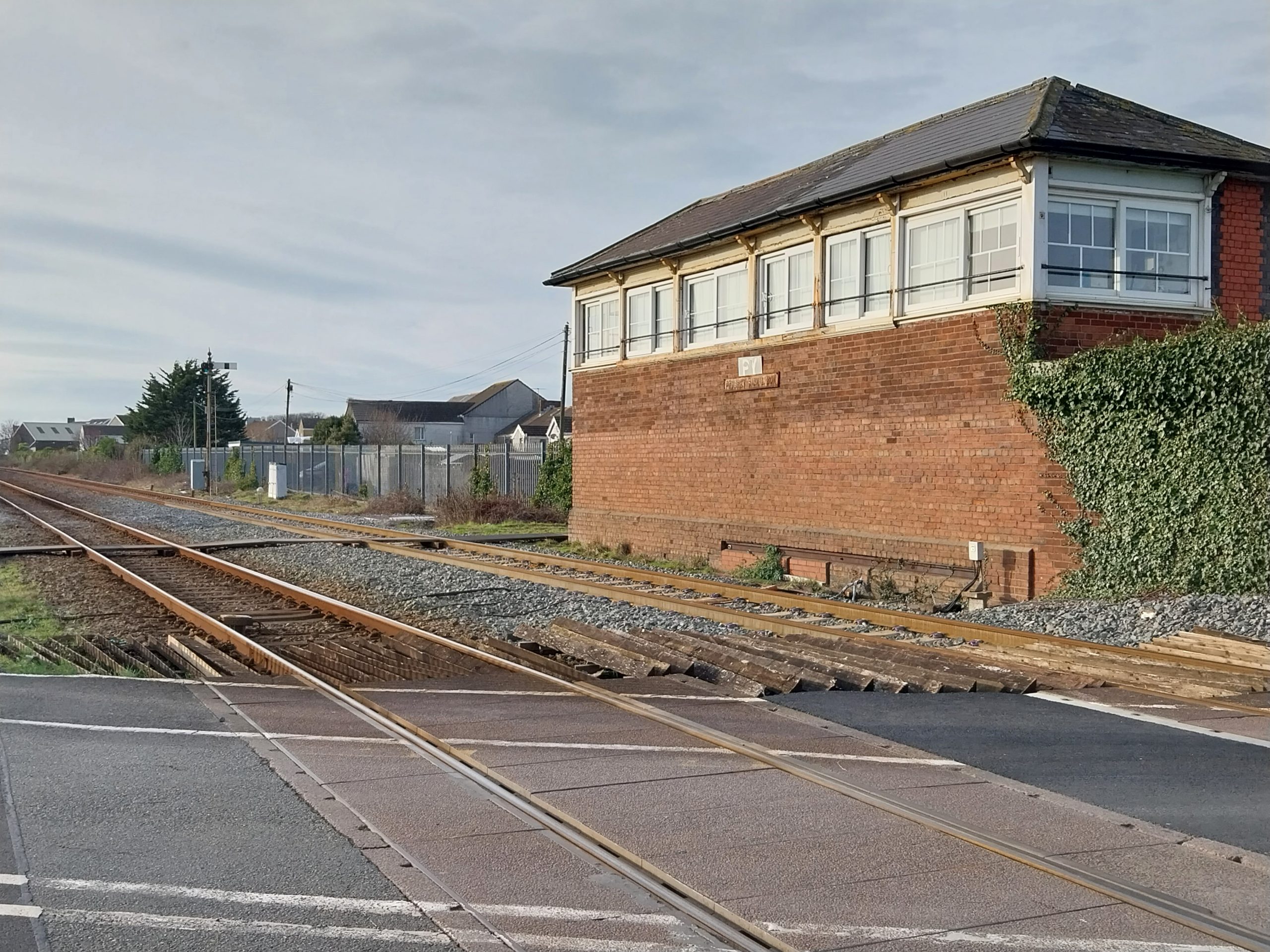 PEMBREY SIGNAL BOX
PEMBREY SIGNAL BOX
Opened in 1907, and known as Pembrey East Box, the signal box was once at the heart of a busy railway system and one of a group of signal boxes around Burry Port harbour. Lines from the Gwendraeth Valley Railway, Brunel’s Great Western Railway Railway (GWR), a line from Cwm Capel Colliery and later coal supplies to Carmarthen Bay Power Station all converged on a relatively small area. When the original main line was built in 1844 by the South Wales Railway Company (Brunel’s GWR took it over in 1852) there were already the beginnings of a complex system.
The box is described as a GWR type 7 box which referred to its design. Each railway company had their own architectural designs of stations, sheds, bridges and signal boxes. In 1907 when it was built it housed 31 levers. After work began on the building of the power station in 1947 in addition to normal heavy rail traffic the signalling system had to accommodate the storing and moving of up to 140,000 tons of coal to fuel the power station. The box was enlarged at this time with an extension and given an updated 83 lever frame. Now at the end of its life in 2023 there are fewer frames due to much reduced traffic.
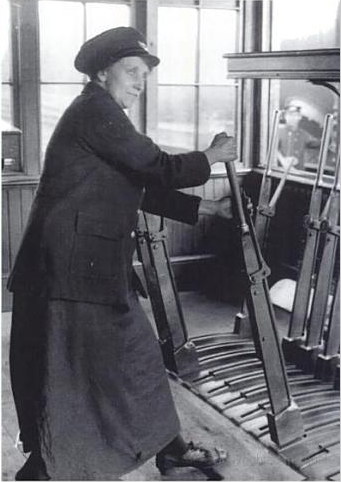
During WW1 and WW2 many women were employed working on the railways and among the jobs they did was working signal boxes. It would appear that there were some problems in that some signalwomen found difficulty in working the heavy levers. There was some lengthy correspondence between GWR at Reading, Swansea and Carmarthen regarding a method that was being trialled at Burry Port Dock Junction which would have made it easier for the levers to be pushed back into the frame. The report stated “Although Miss Melton can manage it fairly well, Miss Morgans who is slightly built, has a little difficulty in doing so. I have no doubt that with a little practice she could master this, but if something further can be done to ease the pulling operation, it would be a distinct advantage”. Unfortunately, it appears that the problem was never resolved satisfactorily
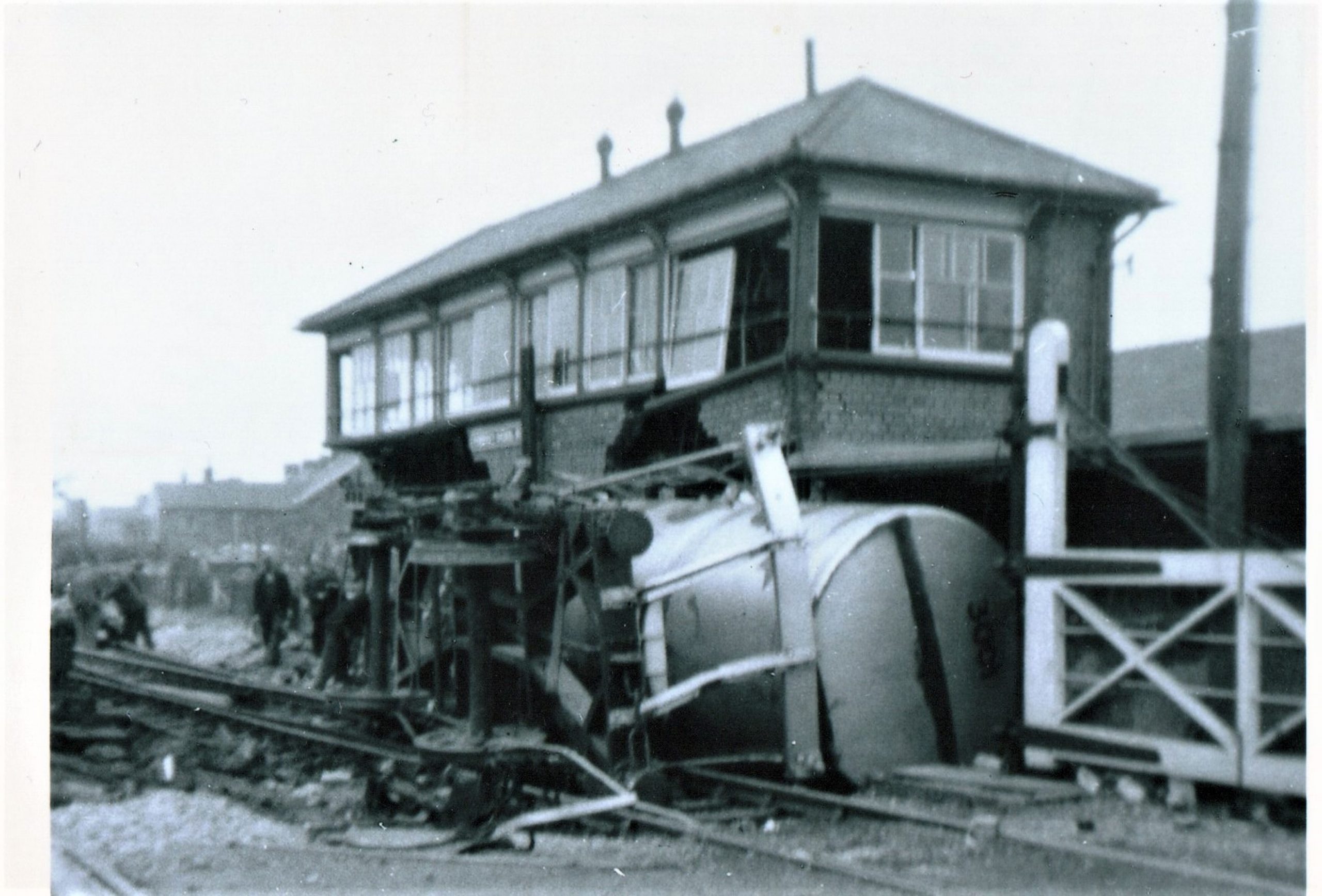
In 1953 the signal box suffered serious damage when an oil train was derailed and some of the tanker’s wagons crashed into the signal box.
In the early days of rail travel junctions and crossings were operated by a signal man who used flags to control the trains. From the 1840s onwards signal boxes were built which had mechanical equipment controlling signals, level crossings and the points which allowed trains to change from one line to another.
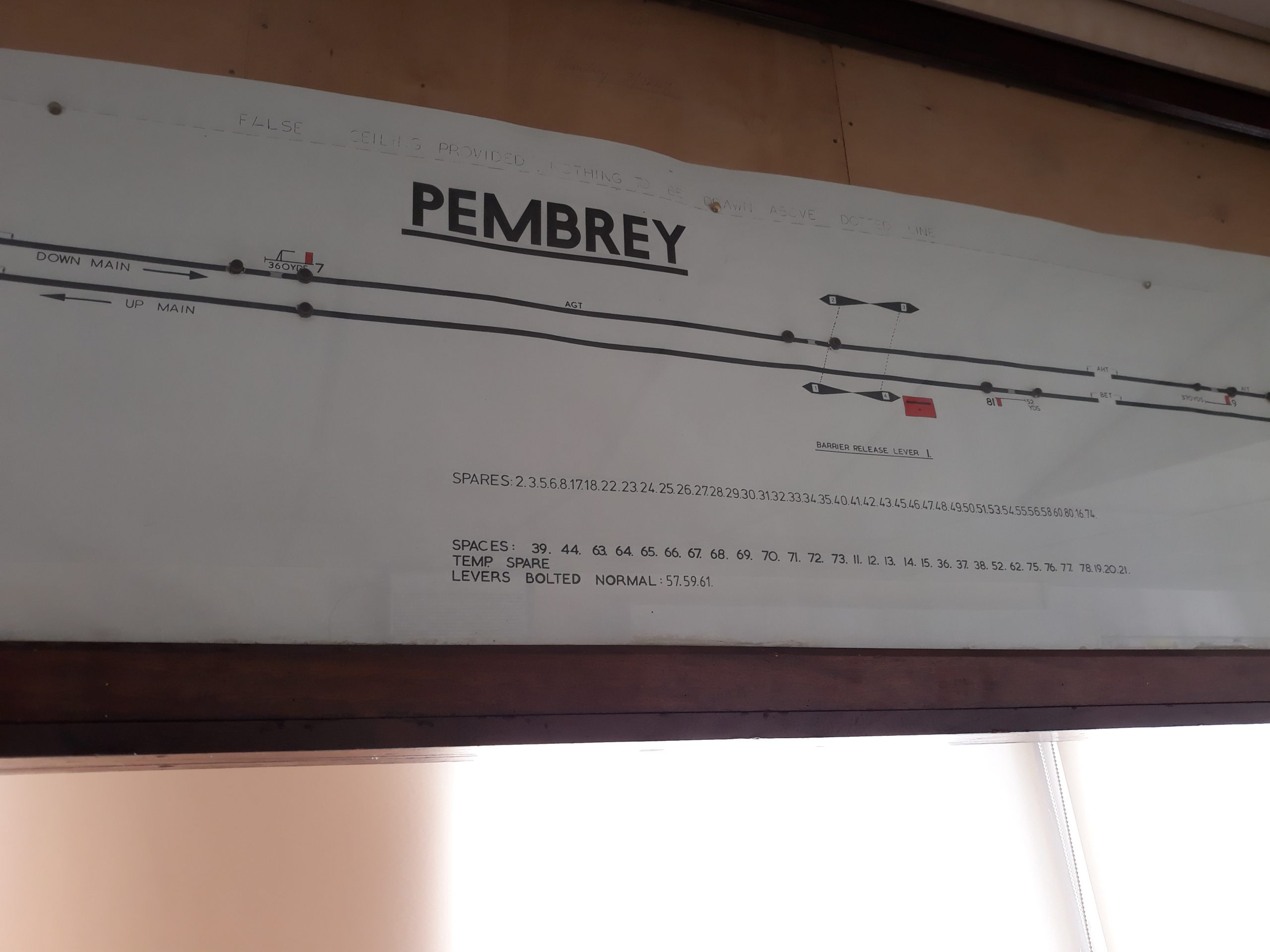
A universal signalling system was needed on British Railways to communicate and ensure safety and this was planned on what is known as the space principle. This ensures there is always safe space between trains and that only one train was allowed in that space at a time. To achieve this lines were divided into sections known as blocks, each under the control of the signalman. The Pembrey signal box was responsible for the block between Pembrey and Kidwelly and the electrical board in the signal box showed the signalman all the points and exactly where the moving train was.
Communication between signal boxes at each end of the block system was by means of bells operated in connection with a block instrument. This had a dial divided into three sections – Line Blocked, Line Clear and Train on Line, indicating whether the train was able to move safely in and out of the block. The default position was line blocked where the line was regarded as closed until the Pembrey signalman received permission from the man in the Kidwelly forward box to indicate that the line was clear and that the train cold enter the block.
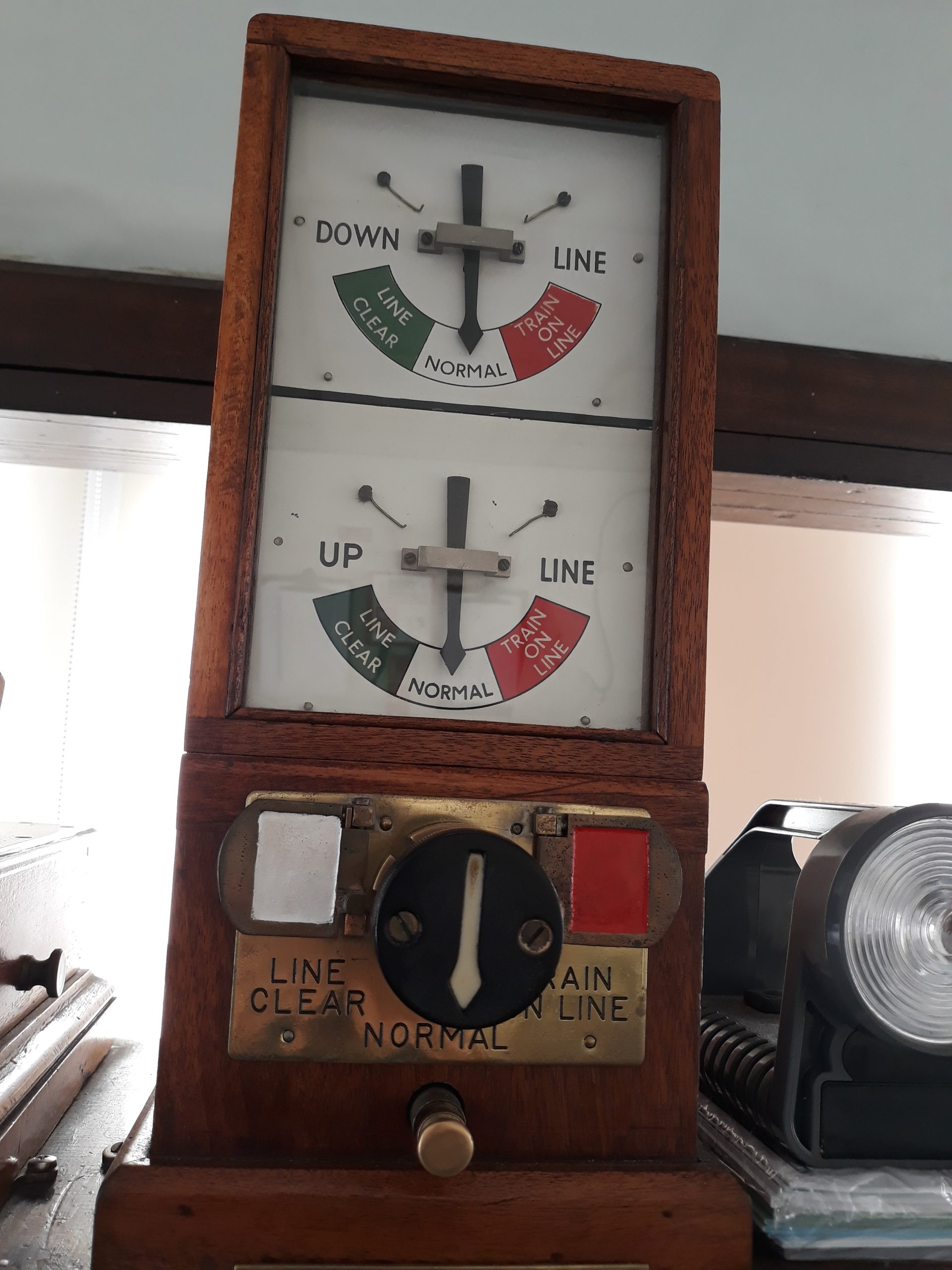
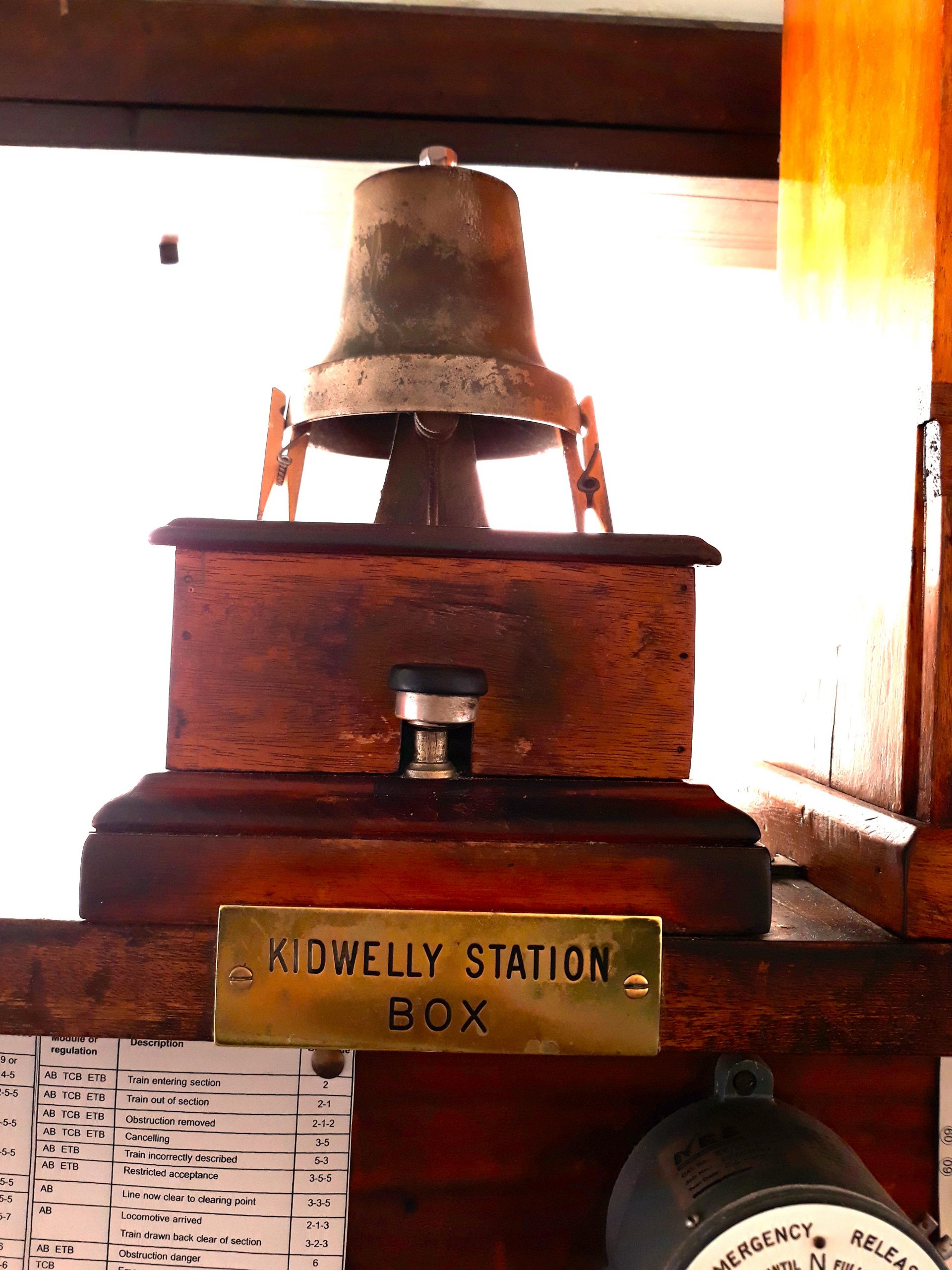
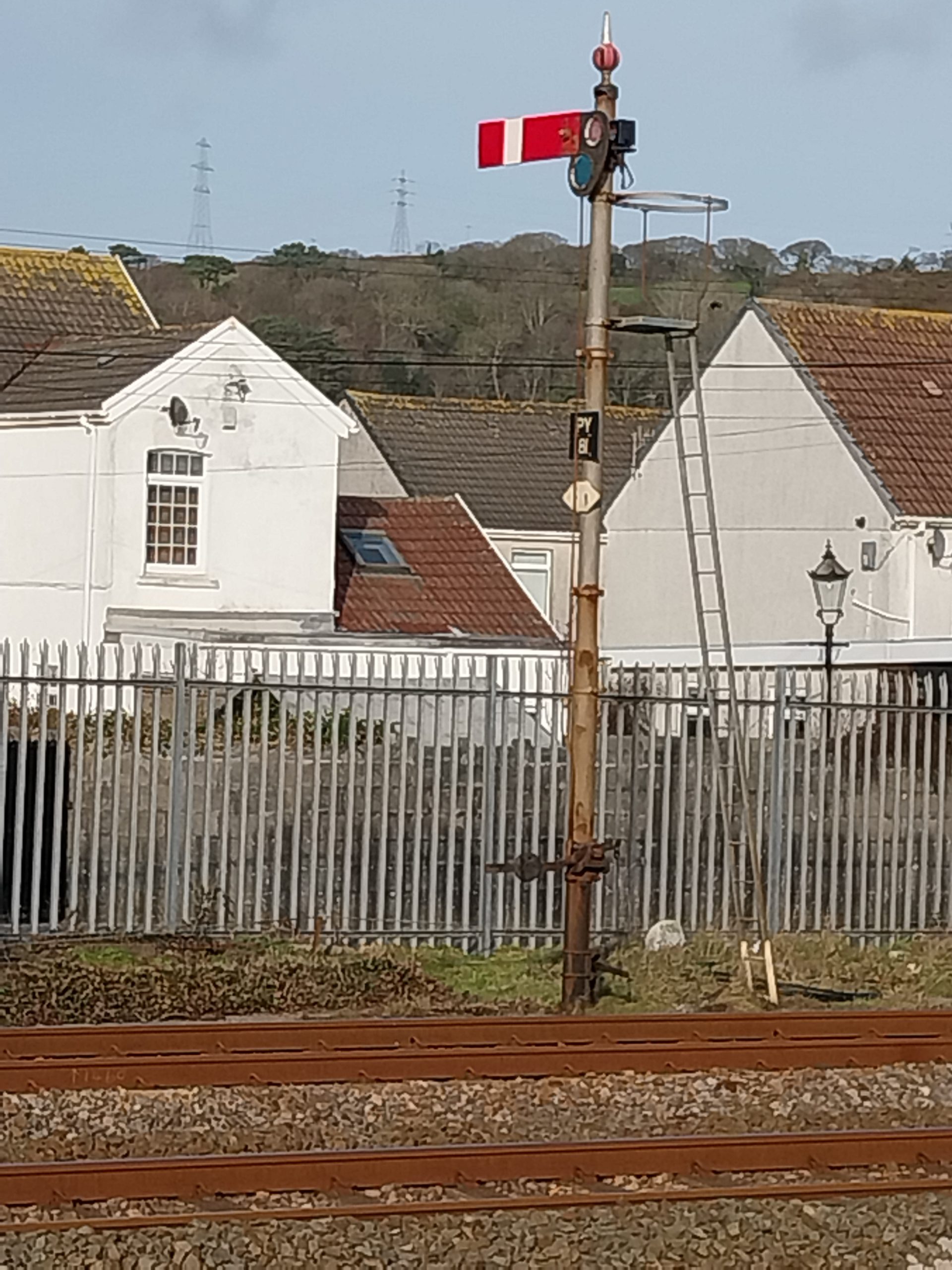
Instructions were sent to the train driver through an elevated semaphore signal system which was fitted on the left hand side of the track for the approaching train. Signals were fitted with coloured glassspectacles which at night time were illuminated initially by oil, lit manually by lamp lighters, and later by electricity. Basic signal colours of red (stop) and green (go) were applied as well as many other configurations both of colour and the position of semaphore arms.
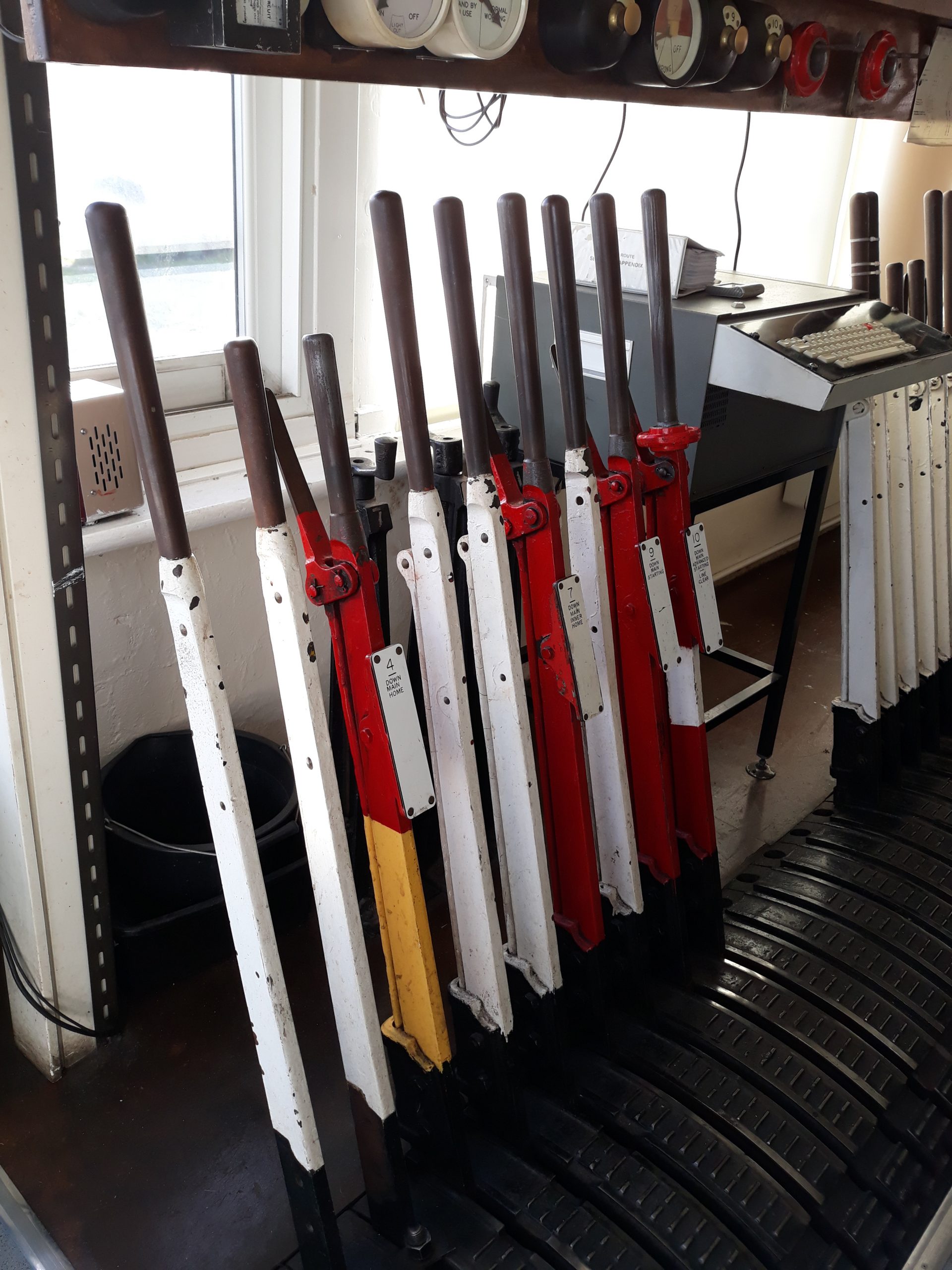
The levers, pulled and pushed by the signalman, worked the frame underneath the cabin. They were colour coded and the number of levers was connected to the size of the frame. For example, red would indicate a stop signal, black and blue the points and other levers worked locking devices as an extra safety feature.

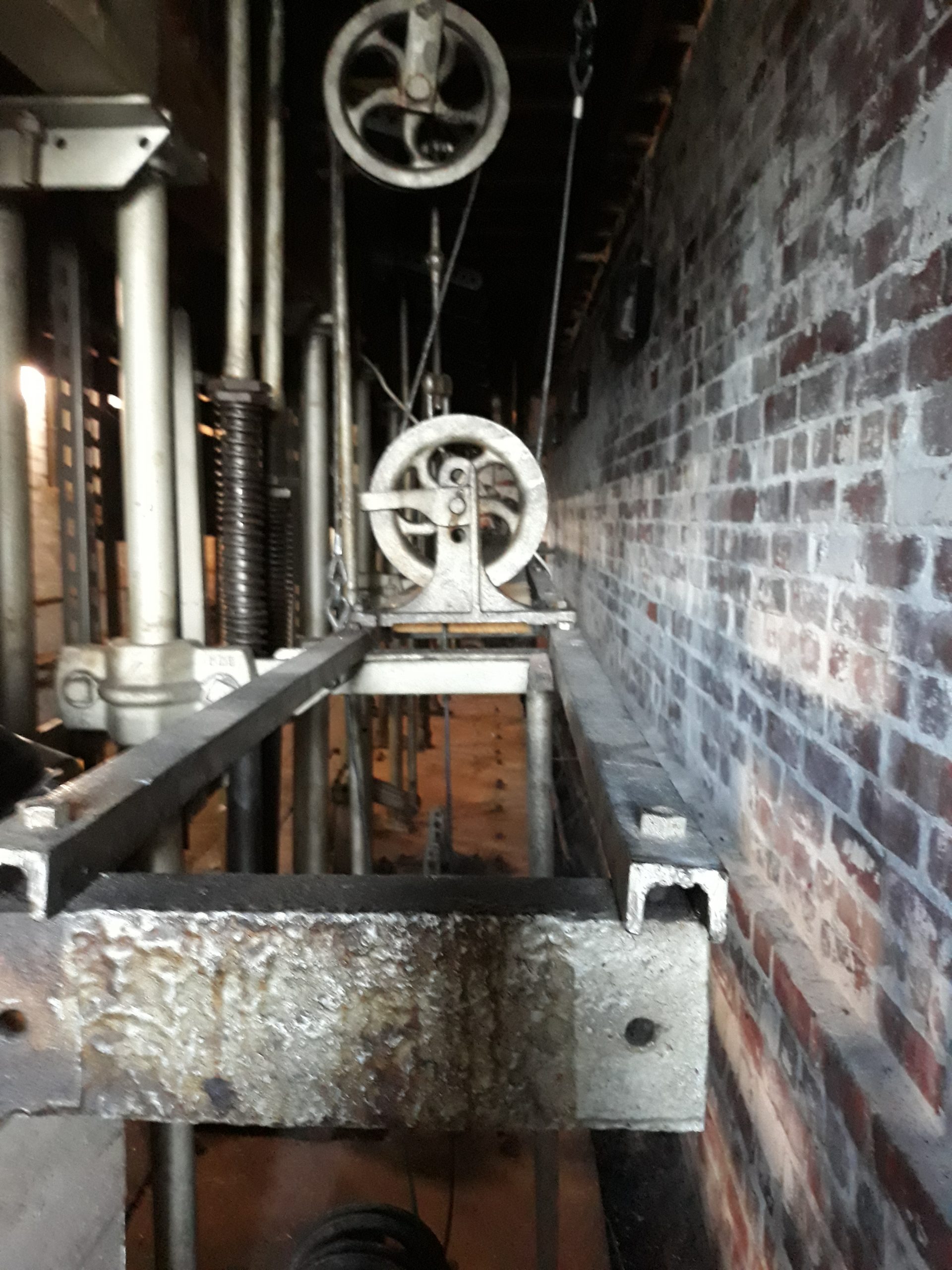
The actual mechanism of the signals and the points was situated underneath the top cabin. These interlocking mechanisms have been described as a “mechanical computer”. Activated by the levers, they controlled signals, points and prevented conflicting routes being set. Wire adjuster shortened or extended the length of wire that ran to the signals. Weather conditions could have a big effect on a run of wire.
Pembrey signal box controlled the section of railway track between Burry Port and Kidwelly for 116 years (at the time of writing) but now like the age of steam for which it was initially designed it has been superseded by a 21st century digital system and the signal box is due to be demolished.
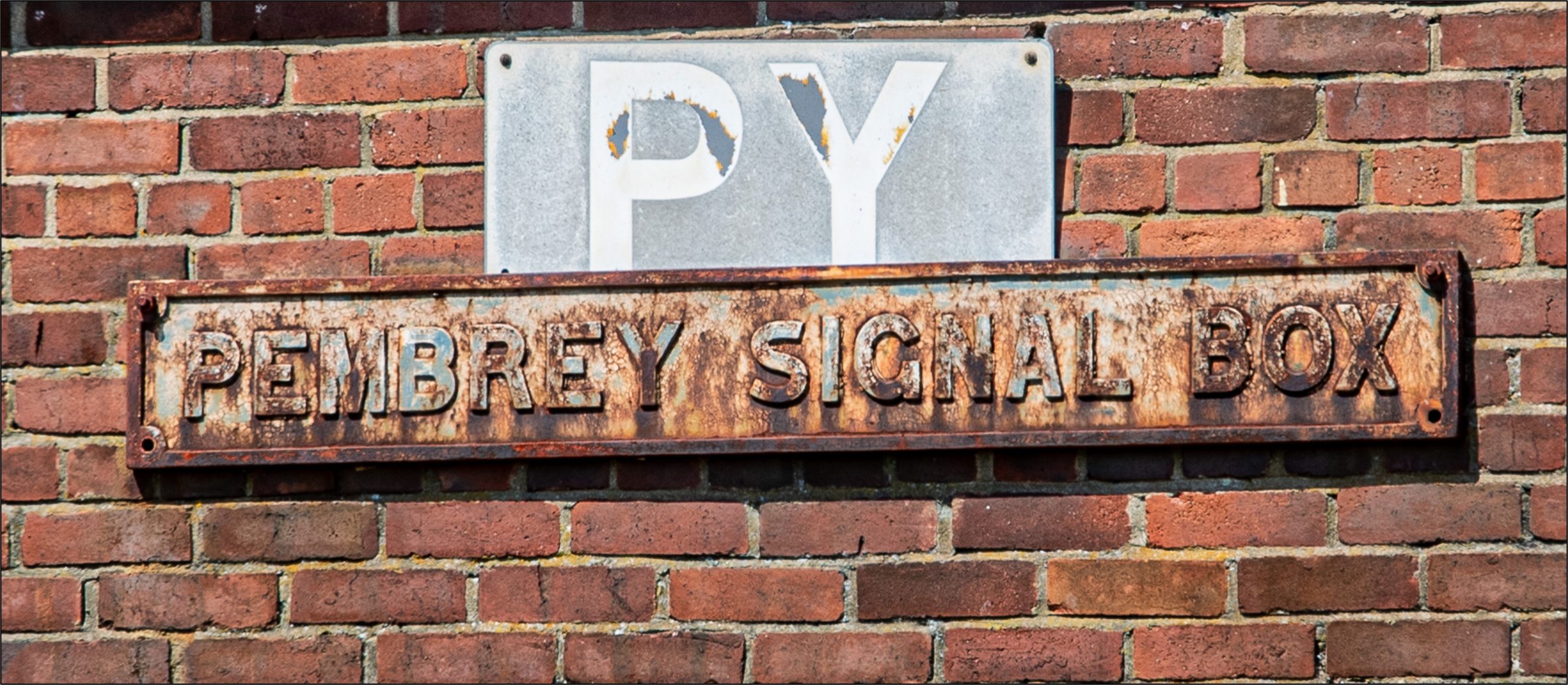
Sources
- ‘Signalling Atlas and Signal Box Directory’, Peter Kay, Signalling Record Society, 2010.
- ‘British Railways Today’, Ed. John. St. John, Naldrett Press, 1954.
- https://signalbox.org
ELLEN DAVIES October 2023
POSTSCRIPT
In 2018 the Pembrey and Burry Port Heritage Group submitted to CADW a request that the signal box should be listed, and therefore protected from any future removal. The claim was rejected and below is the reply we received from CADW.
The Bury port signal box has previously been considered – and rejected for listing – on two occasions, most recently as part of our thematic work on signal boxes. This identified the box as being a GWR type 7 box of 1907 with a 1953 frame. We have assessed the building against the criteria again in light of the information you provided on the historical importance of the box, but this is not enough to overcome its overall lack of architectural interest. It has not been identified as being one of the best examples of type, and we would need very strong supporting evidence to show that the earlier decisions not to list were incorrect.
Our approach is been to select the best examples of particular types of signal box and to list these. We have listed a GWR type 7(a) at Llangollen and other GWR examples at Llanelli and Pantyffynon. The example of Burry Port has been judged to be not of the required standard when compared to these boxes. It was altered with the introduction of a later signal frame and repaired on at least two occasions. The photograph submitted also shows at least two windows replaced with plastic and a roof cover that looks to have been replaced.
We acknowledge the wider importance of the box to the local community and its heritage (and we would not disagree with the information that has been submitted) but it would seem the most viable for the future for the box is it for is for it to be valued and appreciated locally.
